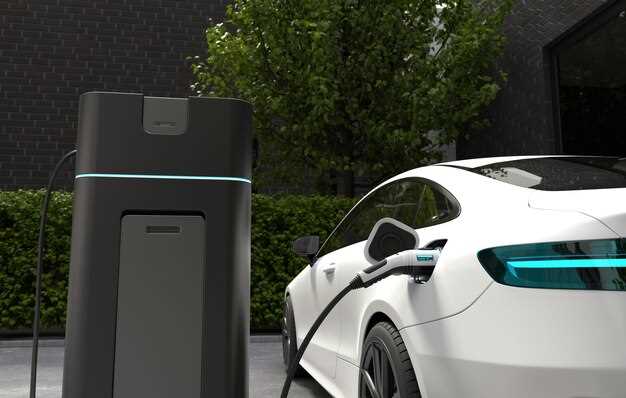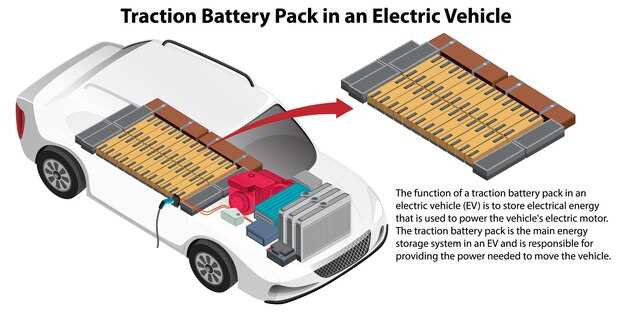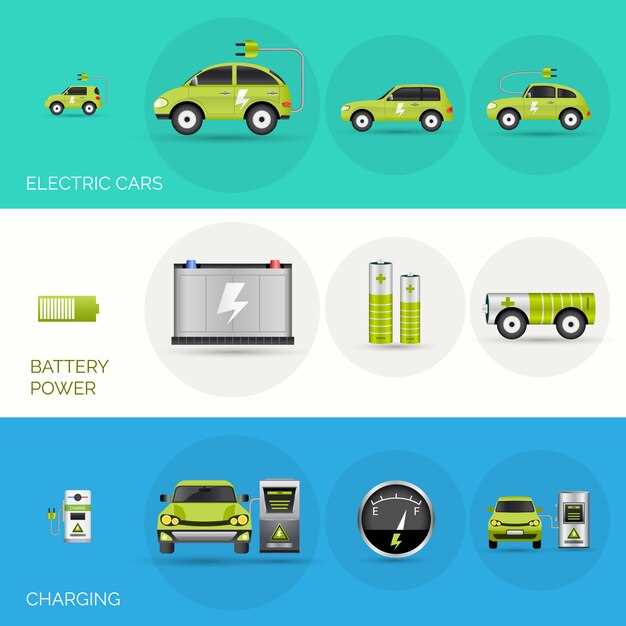
The electric vehicle (EV) market is undergoing a revolutionary transformation, primarily driven by advancements in battery technology. As the demand for sustainable transportation continues to rise, manufacturers are focusing on developing lighter and more efficient battery solutions. This journey towards enhanced performance not only aims to increase the range of EVs but also addresses the consumers’ growing need for quicker charging times.
Traditionally, EV batteries have been constrained by weight and energy density limitations. However, recent innovations in battery chemistry and construction have paved the way for alternatives that surpass these hurdles. Cutting-edge technologies such as solid-state batteries, lithium-sulfur configurations, and advanced battery management systems are emerging as game-changers, promising to deliver significant improvements in both energy capacity and overall vehicle performance.
In this article, we will explore the latest developments in EV battery solutions, highlighting how these advancements are not only making electric vehicles lighter but also faster. By examining the current trends in battery design and the future outlook for EV technology, we can gain insights into the pivotal role that batteries play in shaping the future of sustainable transport.
Evolution of EV Batteries: Faster and Lighter Solutions

The development of electric vehicle (EV) batteries has undergone significant transformation in recent years. As demand for sustainable transportation grows, the need for quicker and lighter battery solutions has become paramount.
Key advancements in battery technology include:
- Improved Energy Density: Modern batteries now offer higher energy density, enabling vehicles to travel longer distances on a single charge.
- Solid-State Batteries: This emerging technology replaces liquid electrolytes with solid materials, resulting in batteries that are lighter, safer, and faster-charging.
- Fast-Charging Capabilities: New charging technologies allow for significant reductions in charging time, making EVs more convenient for users.
In addition to technological improvements, several materials have been explored to enhance battery performance:
- Graphene: Known for its strength and conductivity, graphene can lead to lighter batteries with quicker charge times.
- Lithium-Sulfur: This chemistry can provide higher capacity and energy while being less costly and environmentally friendly.
- Nano-Composite Materials: These materials contribute to lighter battery construction, further reducing the overall weight of the EV.
Manufacturers are continuously striving to enhance the efficiency of battery production. The following methods are being implemented:
- Automation: Increased automation reduces production costs and time, leading to faster availability of advanced battery technologies.
- Recycling Programs: Efforts to recycle batteries minimize waste and promote sustainable practices in battery manufacturing.
The push for lighter and faster EV batteries is crucial for the future of electric vehicles. As technology evolves, consumers can expect improved performance and greater accessibility in the EV market.
Innovations in Battery Chemistry for Enhanced Performance

The evolution of electric vehicle (EV) technology heavily relies on advancements in battery chemistry. Traditional lithium-ion batteries have served as the backbone for EVs; however, researchers and manufacturers are now exploring alternative materials and compositions to enhance performance. Innovations in battery chemistry aim to increase energy density, reduce weight, and improve charging times, ultimately leading to longer driving ranges and improved efficiency.
One significant advancement is the development of solid-state batteries, which utilize a solid electrolyte instead of a liquid one. This shift not only enhances safety by reducing the risk of leaks and flammability but also enables higher energy densities. Solid-state batteries promise to deliver greater capacities within a lighter package, making them a viable option for next-generation EVs.
Another area of innovation involves the use of silicon anodes as a replacement for traditional graphite. Silicon can store significantly more lithium ions, potentially increasing the overall energy capacity of batteries. This transition could lead to lighter batteries with expanded driving ranges, addressing one of the primary concerns for EV users.
Additionally, researchers are exploring lithium-sulfur and sodium-ion batteries as alternative technologies. Lithium-sulfur batteries offer the potential for higher energy densities at a lower cost, while sodium-ion batteries capitalize on abundant sodium resources, providing a more sustainable solution. Both technologies present opportunities to create lighter, more efficient EV batteries, while also reducing reliance on scarce materials.
In conclusion, ongoing innovations in battery chemistry play a critical role in the future of EV technology. The transition to solid-state, silicon-based, and alternative chemistry batteries signifies a shift toward enhanced performance, optimizing energy efficiency, safety, and sustainability in electric vehicles.
Advancements in Cooling Technologies for Better Efficiency
Recent leaps in cooling technologies have significantly enhanced the performance and efficiency of EV batteries. As electric vehicles continue to gain popularity, the demand for advanced thermal management systems becomes increasingly critical to maintain optimal battery operation.
Modern EV batteries generate considerable heat during charging and discharging processes, which can lead to decreased efficiency and lifespan if not managed properly. Effective cooling solutions mitigate these issues by maintaining an ideal temperature range, allowing batteries to operate at peak performance without overheating.
Innovations such as liquid cooling systems have emerged as effective methods to dissipate heat more efficiently than traditional air cooling solutions. These systems circulate a coolant through channels in the battery packs, allowing for rapid heat transfer and maintaining a uniform temperature across all cells.
Moreover, phase change materials (PCMs) have been introduced to absorb excess heat and release it when temperatures drop, further stabilizing battery temperature. This technology not only improves efficiency but also extends the life cycle of EV batteries, making them a viable long-term investment for consumers.
Additionally, advancements in thermal interface materials enhance thermal conductivity between battery components, further optimizing heat dissipation. The integration of various sensors and smart algorithms helps in monitoring and controlling the battery temperature in real-time, ensuring that cooling systems operate only when necessary, thus saving energy.
In conclusion, the evolution of cooling technologies plays a pivotal role in enhancing the efficiency and longevity of EV batteries. As the industry continues to innovate, these advancements will be crucial in meeting the growing demands for faster, lighter, and more efficient electric vehicles.
Future Trends in Solid-State Batteries for Electric Vehicles
Solid-state batteries are poised to revolutionize the electric vehicle (EV) market with their promising advancements in energy density, safety, and longevity. Unlike traditional lithium-ion batteries, solid-state technology replaces the liquid electrolyte with a solid material, significantly improving performance metrics. This shift is anticipated to lead to lighter and more compact battery designs, making EVs more efficient and enhancing their overall range.
One of the most notable future trends is the development of high-capacity solid electrolytes that enable batteries to operate at higher voltages without compromising safety. This will allow for an increase in energy density, potentially offering over 500 Wh/kg, which is a substantial improvement compared to current lithium-ion solutions. As a result, EV manufacturers could produce vehicles that travel significantly longer distances on a single charge, addressing one of the primary concerns of potential electric vehicle buyers.
Another trend is the integration of advanced manufacturing techniques, such as roll-to-roll processing, which can lead to cost-effective production of solid-state batteries. Innovations in materials science have also led to the use of alternative lithium sources and the exploration of sodium-ion configurations. These developments not only promise lower costs but also enhance the sustainability of battery production, aligning with global efforts to reduce the environmental impact of battery technology.
Furthermore, the implementation of smart battery management systems (BMS) in solid-state batteries will be crucial. These systems will leverage AI and machine learning to optimize charging cycles, monitor battery health, and predict maintenance needs, vastly enhancing the reliability and lifespan of EV batteries. Improved BMS technology will allow manufacturers to harness the full potential of solid-state solutions, ensuring that they meet the demands of an evolving electric vehicle ecosystem.
In conclusion, the future of solid-state batteries in electric vehicles is brimming with potential. With advances in energy density, manufacturing efficiency, and smart technology integration, solid-state batteries are set to become the cornerstone of next-generation EVs, driving the transition to a more sustainable and efficient automotive industry.




